Key takeaways:
- Cordless tools offer significant advantages in convenience, freedom of movement, and advancements in battery technology, enhancing efficiency for various tasks.
- Key features to consider when choosing cordless tools include battery capacity, weight and balance, and brand compatibility for interchangeability.
- Top brands like Milwaukee, DeWalt, and Bosch are recognized for their durability, performance, and ergonomic designs, making them reliable choices for tool enthusiasts.

Advantages of cordless tools
One significant advantage of cordless tools is their convenience. I remember a time when I was trying to fix a leaky faucet under my kitchen sink. With a cordless drill, I could easily maneuver into tight spaces without being tethered to a wall outlet. It was such a relief to not worry about tripping over cords or having to pause my work to find an extension cord!
Cordless tools also offer incredible freedom. Think about it: how often have you been frustrated by cords that just won’t reach? I can vividly recall working in my backyard, navigating around bushes and fences, feeling completely unrestricted. It’s empowering to have that level of flexibility, allowing you to focus solely on the task at hand rather than on managing cables.
Finally, let’s talk about advancements in battery technology. The evolution of lithium-ion batteries means that today’s cordless tools can run longer and charge faster than ever before. I recently used a cordless impact driver for a big project, and the battery lasted throughout my entire task without a hitch! Isn’t it amazing how these tools can keep up with our demanding projects?

Popular types of cordless tools
When it comes to popular types of cordless tools, there’s quite a variety that meets different needs. For me, nothing beats the versatility of a cordless drill. I once used it to assemble a new piece of furniture in my living room, and it made the whole process so seamless. I didn’t have to worry about finding a plug or tangling cords, which really let me focus on getting everything just right.
Here’s a quick list of some of the most popular cordless tools you might consider:
- Cordless Drill/Driver: Perfect for drilling holes and driving screws with ease.
- Cordless Impact Driver: Great for heavier tasks that demand higher torque.
- Cordless Circular Saw: Ideal for making straight cuts in wood without the hassle of cords.
- Cordless Reciprocating Saw: Fantastic for demo work or cutting through materials at odd angles.
- Cordless Jigsaw: A favorite for intricate cuts and curves, making it a go-to for creative projects.
- Cordless Sander: Simplifies the sanding process, allowing for smooth finishes without getting tied down.
- Cordless Hedge Trimmers: A game-changer for maintaining landscaping without being restricted by power outlets.
I find it fascinating how each of these tools has its own unique benefits and applications in various projects. Just the other day, I grabbed my cordless hedge trimmer to tackle some overgrown bushes in my yard, and it was such a relief not to navigate through tangled cords while I worked. Each tool not only enhances convenience but also maximizes my efficiency, making home improvement enjoyable!

Key features to consider
When evaluating cordless tools, one key feature to consider is battery capacity. A higher amp-hour (Ah) rating often leads to longer run times between charges. I remember when I bought my first cordless tool—an impact wrench—with just a 2 Ah battery; I found myself frequently stopping to recharge. It was a learning experience that taught me the value of investing in quality batteries.
Another important aspect to think about is the tool’s weight and balance. I once used a top-heavy cordless drill for an extended project, and it quickly became tiresome. Tools that are evenly balanced feel more comfortable in your hands, especially during longer tasks. Being able to work without straining my wrist made all the difference in productivity and enjoyment.
Moreover, brand compatibility deserves mention. Some brands offer interchangeable batteries across their tool lines, which can significantly enhance versatility. I’ve experienced the convenience of grabbing multiple tools powered by the same battery, saving time and effort. It’s such a relief not to fumble around searching for the right charger mid-project!
| Feature | Importance |
|---|---|
| Battery Capacity (Ah) | Longer run times, fewer interruptions |
| Weight and Balance | Enhanced comfort and usability for extended tasks |
| Brand Compatibility | Interchangeable batteries improve versatility |

How to choose cordless tools
When I choose cordless tools, I always start by considering the tasks I plan to tackle. For instance, if I’m going to be working on a big DIY project, I look for tools that offer a good balance of power and battery life. Just last summer, I had a landscaping project where I really appreciated my cordless leaf blower; it buzzed through leaves without requiring constant recharging. Have you ever found yourself frustrated by a battery dying in the middle of an important task? I know I have!
Next, I think about the grip and feel of the tool. I once picked up a cordless screwdriver that felt awkward in my hand, and I quickly realized how important ergonomics are. It’s not just about the specs; the way a tool fits in your hand can make a world of difference. I’ve had tools that were lightweight yet powerful, allowing me to work longer without fatigue. This is something I highly recommend—always test the tool when you can. It’s like finding the perfect pair of shoes; they should feel just right from the start!
Lastly, I pay attention to reviews and recommendations from other users. The insights shared by fellow DIY enthusiasts can provide valuable perspectives on durability and overall performance. I remember reading about a highly-rated cordless jigsaw before I made my purchase; it not only exceeded my expectations but also inspired me to tackle more intricate projects. Have you ever had a similar experience? It’s amazing how sharing knowledge can lead to discovering the best tools for our needs.

Best brands for cordless tools
In my experience, one of the standout brands in the cordless tool market is Milwaukee. Their commitment to durability and innovative battery technology truly shines through. I remember using their cordless sawzall on a remodeling project; it cut through wood like butter, and I was impressed by how long the battery lasted without needing a recharge. Have you ever found a tool that feels like it was made just for you? That’s how I feel about my Milwaukee tools.
Another top contender I often think of is DeWalt. They’ve built a fantastic reputation for their reliable performance and extensive range of tools. During a recent DIY project, I grabbed my DeWalt cordless hammer drill to tackle some heavy-duty tasks. The grip felt secure, and the power was evident—I was able to drill through tough materials with ease. Have you ever had a tool that just seemed to get the job done effortlessly? DeWalt has consistently impressed me in this way.
Then there’s Bosch, a brand I’ve grown fond of for its balance of precision and innovation. A while back, I bought a Bosch cordless impact driver, and it completely changed the way I approached driving screws. It’s lightweight yet powerful, allowing me to work for hours without feeling fatigued. I often recommend Bosch tools to friends who value both functionality and comfort in one package. What are your thoughts on brands that combine ergonomics with performance? It’s like having the best of both worlds in one tool.

Maintenance tips for cordless tools
When it comes to maintenance, I always prioritize keeping the battery contacts clean. I once neglected this and noticed a drop in power; it was frustrating, especially mid-project. A simple wipe with a dry cloth can make a world of difference—how often have you checked your tool’s connections?
Another key tip is to store your tools in a dry area, especially if they have lithium-ion batteries. I learned this the hard way after leaving a tool in damp conditions, which resulted in corrosion. It’s amazing how tiny details can prolong your tool’s life, isn’t it?
Lastly, I recommend regularly checking for wear and tear, particularly on the blades and bits. After all, I’ve had moments where I assumed everything was fine only to realize a dull blade hindered my progress. Keeping spare parts on hand can save a lot of time and frustration—what’s your go-to strategy for tool maintenance?
















